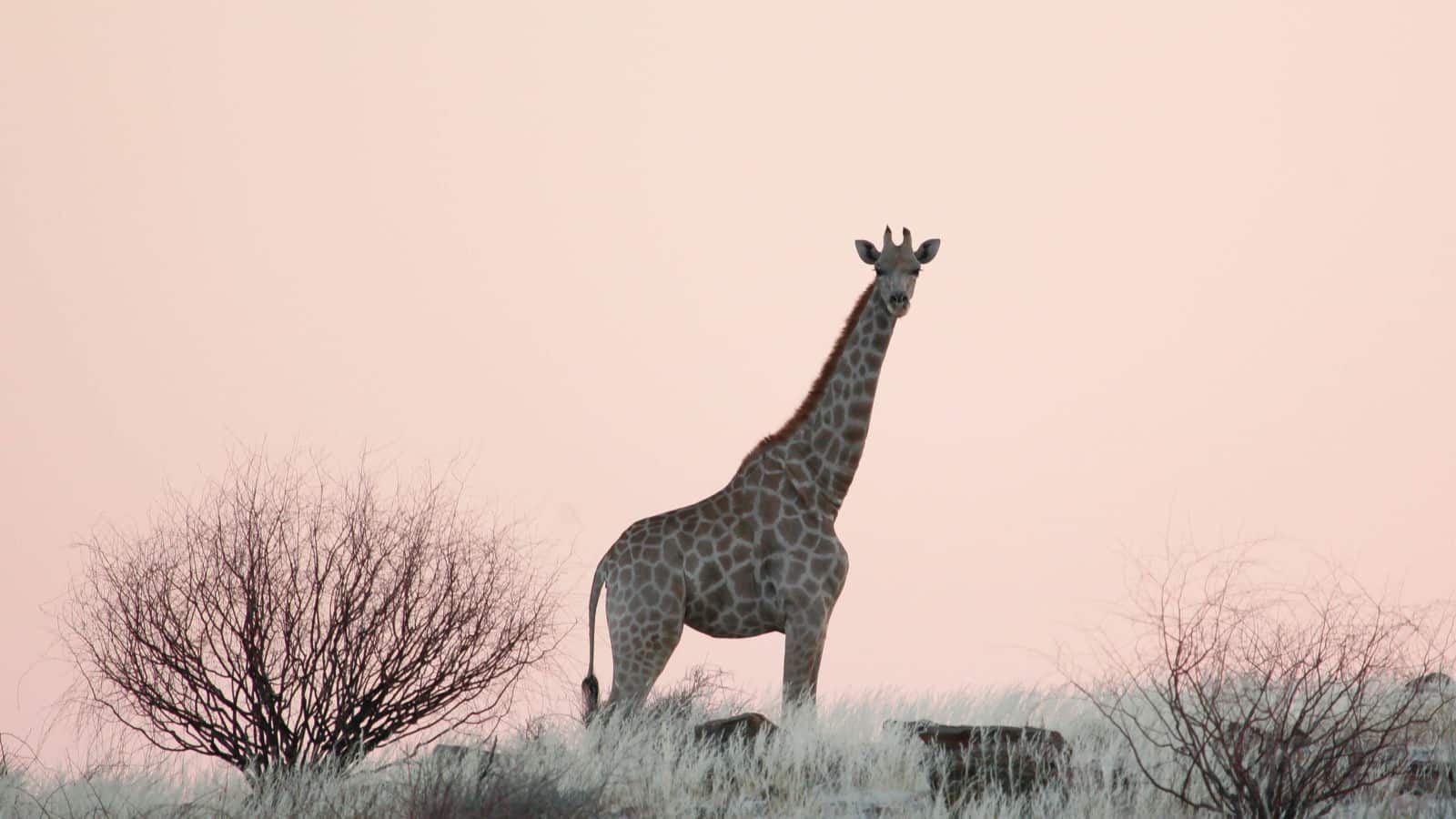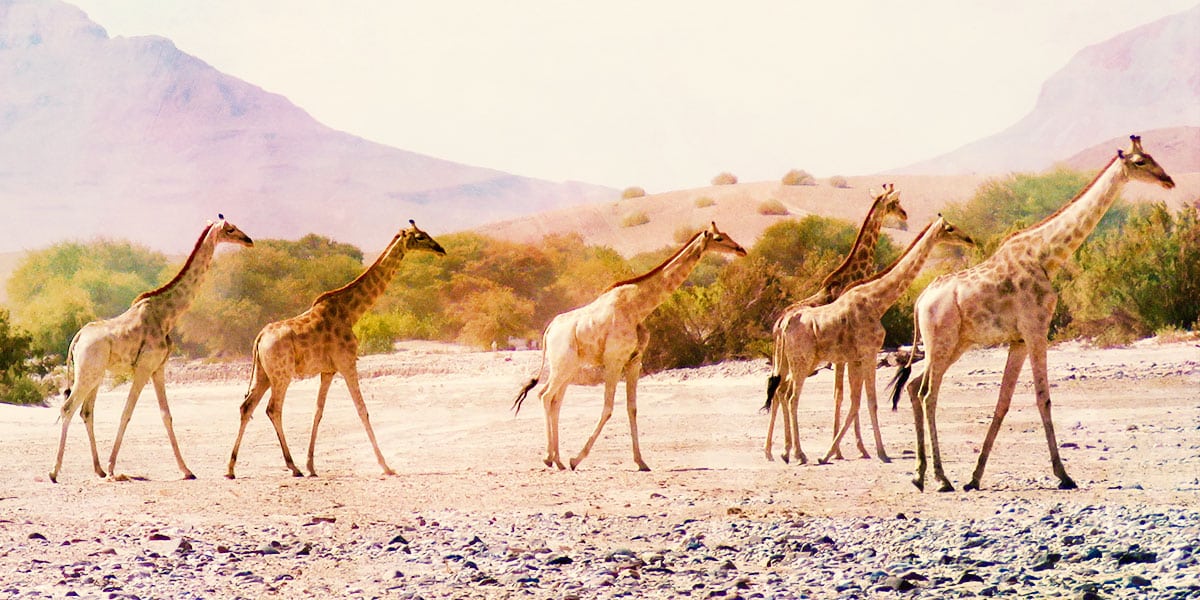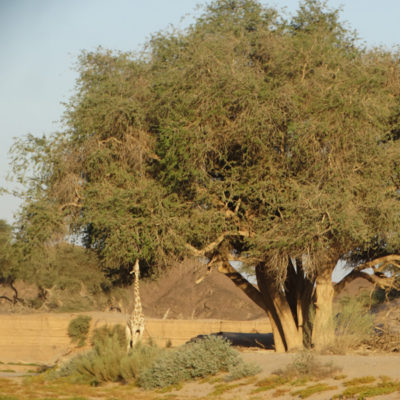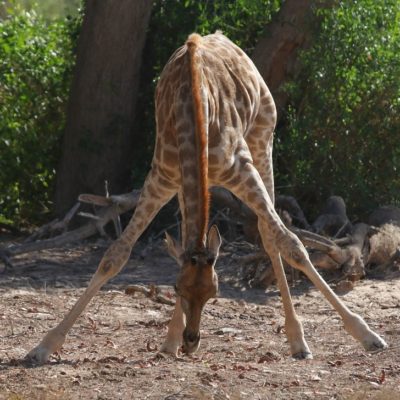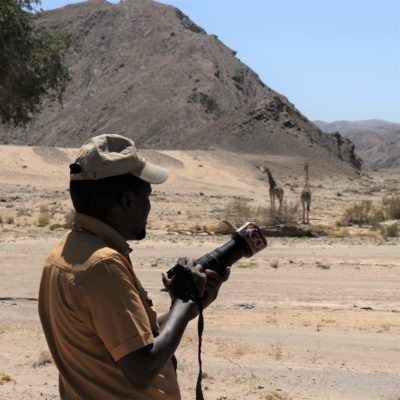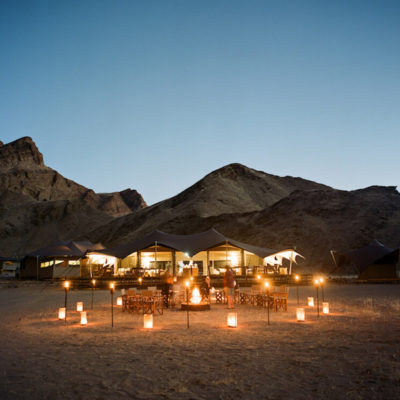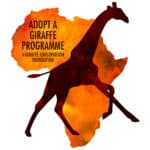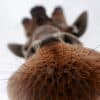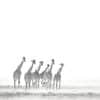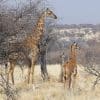Desert-Dwelling Giraffe of Northwestern Namibia
Desert-Dwelling Giraffe of Northwestern Namibia
Word from the Desert
O ur last Quarterly Update – July 2018 brought you news of several new giraffe calf sightings. During the last few months we have observed many of these gangly new additions regularly and are happy to report that they are thriving in their harsh desert home.
As the cold winter nights are slowly being replaced by milder temperatures, wind picks up in the desert – making it even more inhospitable at times. Food is difficult to come by and you might be interested to find out what giraffe actually do feed on in northwestern Namibia. An important food source for all animals in the area are the gigantic Ana trees (Faidherbia albida) that line the ephemeral rivers in the northwest and are particularly imposing along the Hoanib River. With a distinct browse-line at five metres (the height of a rather stretched male giraffe), their leaves, flowers and seed pods are almost unreachable for most animals. Ana trees can grow upwards of 25 metres and unlike the former Acacias (Senegalia spp.) which flower and produce leaves in the summer rainy season, Ana trees rest during summer. When other trees lose their leaves in autumn, Ana trees start producing fresh green leaves and flowers all through winter making them an important food source for the desert adapted giraffe.
Their seed pods are also a sought-after food source for other animals at this time of the year and it is a great sight to watch giraffe and elephant who engage various techniques to get them off the trees: giraffe hyper-extending their necks and appearing to stand on tippy-toes, large male elephant balancing on their hind legs in order to gain more height when stretching for the pods, or simply ripping down large branches or pushing whole trees with their heads to aid the pods to fall. Despite standing at a proud 1.8m at birth, leggy giraffe youngsters and many others are unable to reach the Ana pods on the tree, so instead we often see them splaying their legs and eating the fallen pods from the ground. These pods are like ‘bush candy’ and the highlight of a giraffe’s diet during this time of year.

While our conservation research focuses on observing giraffe, we often witness other interesting things during our field work. We recently observed some rather fascinating behaviour from the largest birds in the world, who share their desert home with giraffe. When our team saw a family of approx. 25 ostrich chicks run alongside their track, they had to stop to watch this spectacle of rapidly moving legs and wings. The ostrich dad was following in hot pursuit, while the mum was running in the opposite direction. It looked like she had injured her leg as she was running with a limp – not a great prospect for survival of the chicks with an incapacitated mother who would not be able to protect after them from the dangers of the desert. When she turned and looked at our car, she stumbled and fell over – she was doomed. But then, a miracle happened, and she got up, ran a further 10 metres at high speed, before the limp became obvious again and she stumbled down – much like a professional soccer player vying for a free kick at the World Cup! She repeated this routine several times, before finally running off in a distance. By this time her chicks had gained a lot of distance from our vehicle and she obviously felt they were safe.
Amazing what parents will do to protect their young!

Other exciting news for GCF in the northwest is our new conservation partnership with the Hoanib Valley Camp, a new lodge located in a hidden valley on the banks of the Hoanib River. The Camp is a joint venture between the tourism company Natural Selection, local communities and GCF. With a shared vision for giraffe conservation this is an exciting partnership in an area with uniquely desert-adapted giraffe.
Guests who stay at the lodge have the exciting opportunity to help their guides with the ongoing conservation of giraffe in the area. When giraffe are encountered during the nature drives, guests with the help of their guides are invited to collect important data to identify individual giraffe and their location. All data collected during these drives contributes to the ongoing data set that was started by our Directors Dr Julian & Steph Fennessy 20 years ago. If the guests are lucky, the may even spot one of our adopted giraffe – so keep this in mind if you consider visiting your giraffe in the wild!
On a side note, it was at the Hoanib Valley Camp that the GCF Directors, Dr Julian and Steph Fennessy, had the honour of joining Prince William for a conservation dinner recently …
Kunene
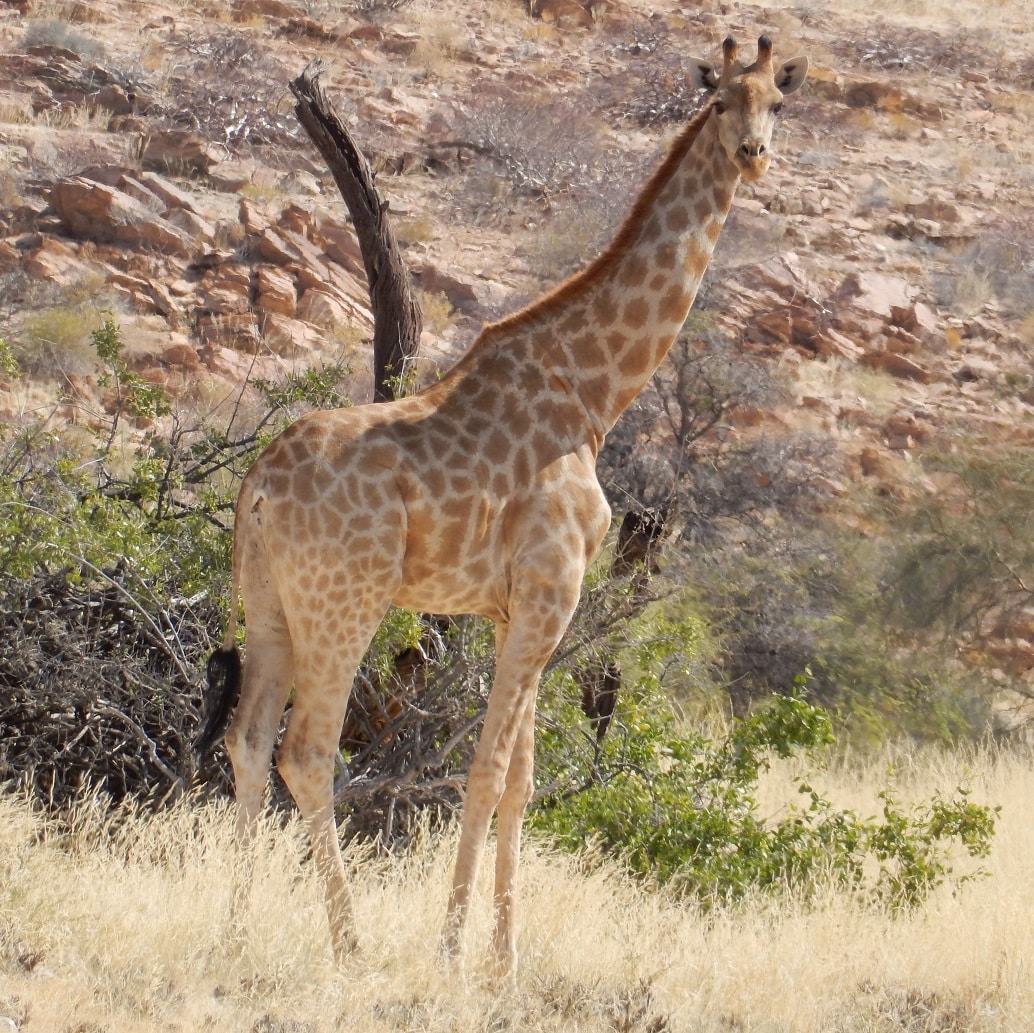
After a long absence, Kunene has finally emerged again. She was spotted in the mountainous area called Okongwe between the Hoanib and Hoarusib Rivers. She has grown a lot since the last time we saw her and has become a beautiful adult female. Spending time in the company of other adult females, she is obviously feeling confident and is venturing further than just her previous home in the Hoanib River. We can only assume that Kunene is still making the most of being calf-free and enjoying the company of other females as they explore the area.
Winky Wonk
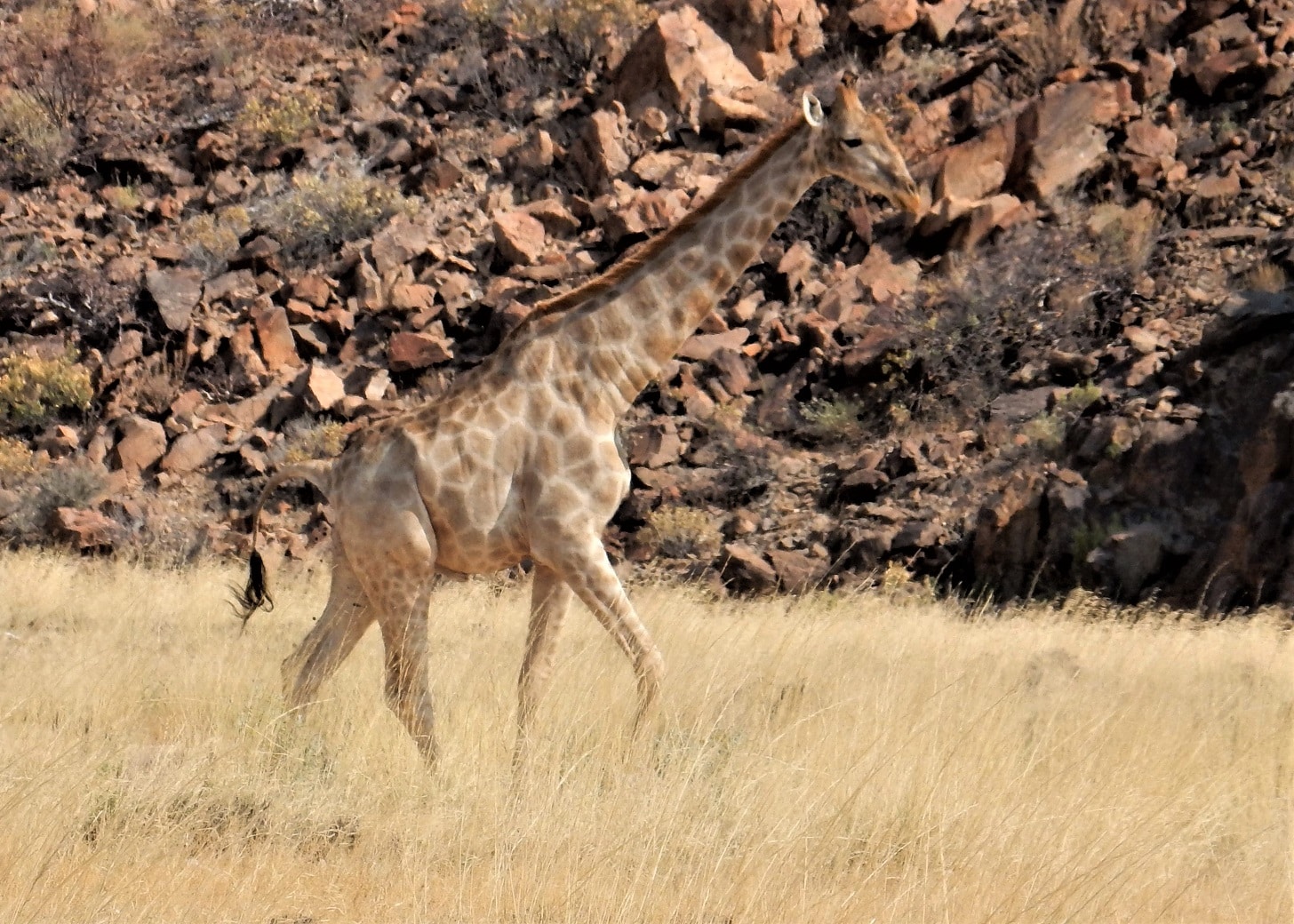
Winky Wonk was also seen patrolling the mountainous area of Okongwe. We often see males walking between the two river systems (Hoanib and Hoarusib Rivers) – a distance of approximately 70 km. Seeing giraffe traversing this harsh and rocky environment with limited food and water is always an amazing sight. We spotted Winky Wonk several times during this quarter, either by himself or in the company of other male giraffe friends. He is possibly on the lookout for females or he could be heading to the Hoanib River for some of the plentiful stock of Ana tree pods.
Muffin

We were delighted to see Muffin, albeit from a distance, recently. He appears to have matured more and may have reached his full height. As with Kunene and Winky Wonk, he was found deep in the mountains with a group of several other giraffe, including a previously unidentified female. We are planning to spend more time surveying the mountainous area between the Hoanib and Hoarusib Rivers in the coming months to get a better idea of how Muffin and the other giraffe are spending their time there.
Kaoko
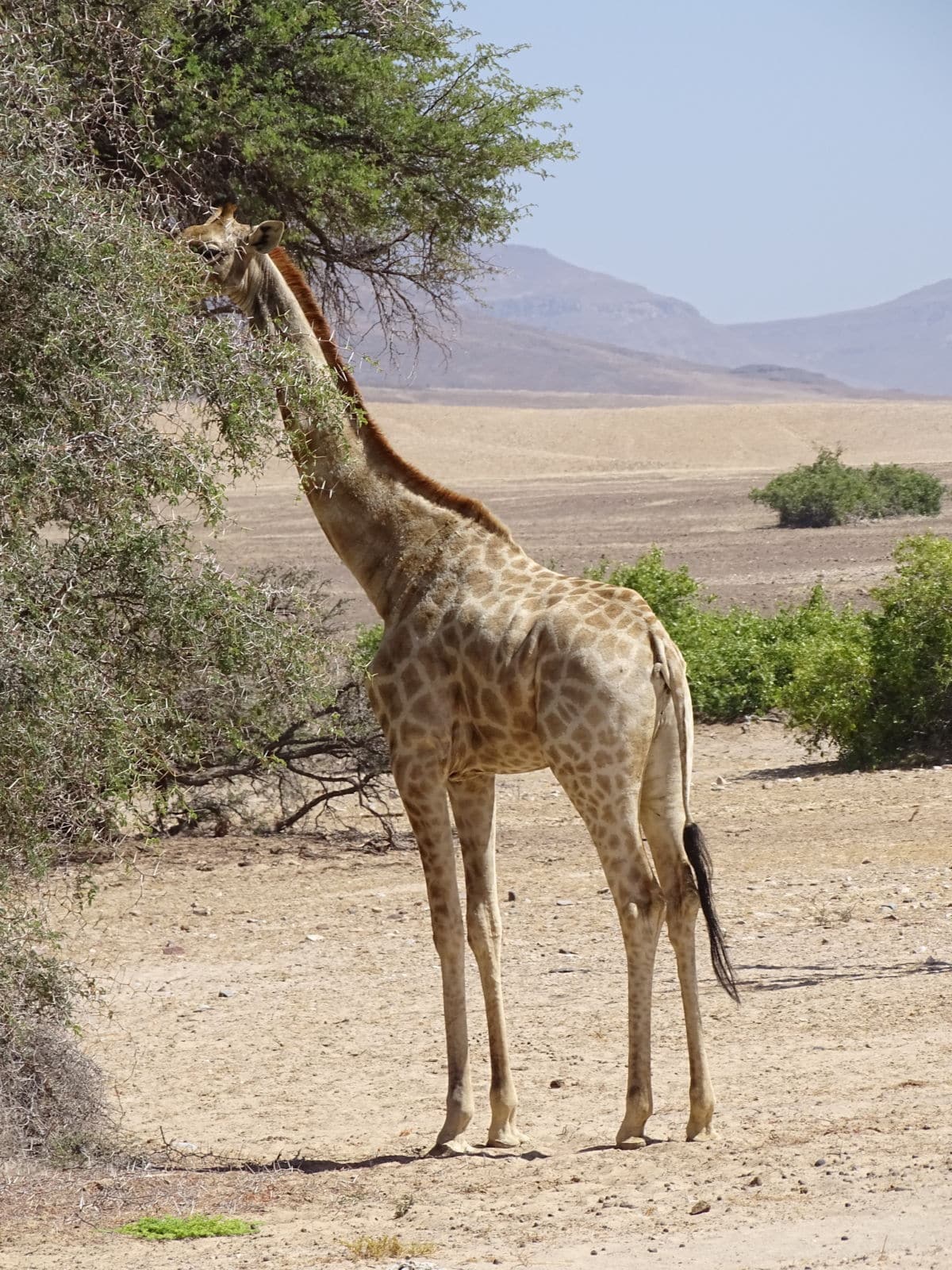
Kaoko was spotted in the Hoarusib River as part of a larger herd of giraffe. In July we reported that we spotted Kaoko enjoying the last of the growth on the trees in the Gomatum River, and she has now moved back to her usual haunt in the lower Hoarusib River. While it is usually the male giraffe that engage in necking bouts, Kaoko was recently seen trying out a few necking techniques on one of her herd mates – check her out below.
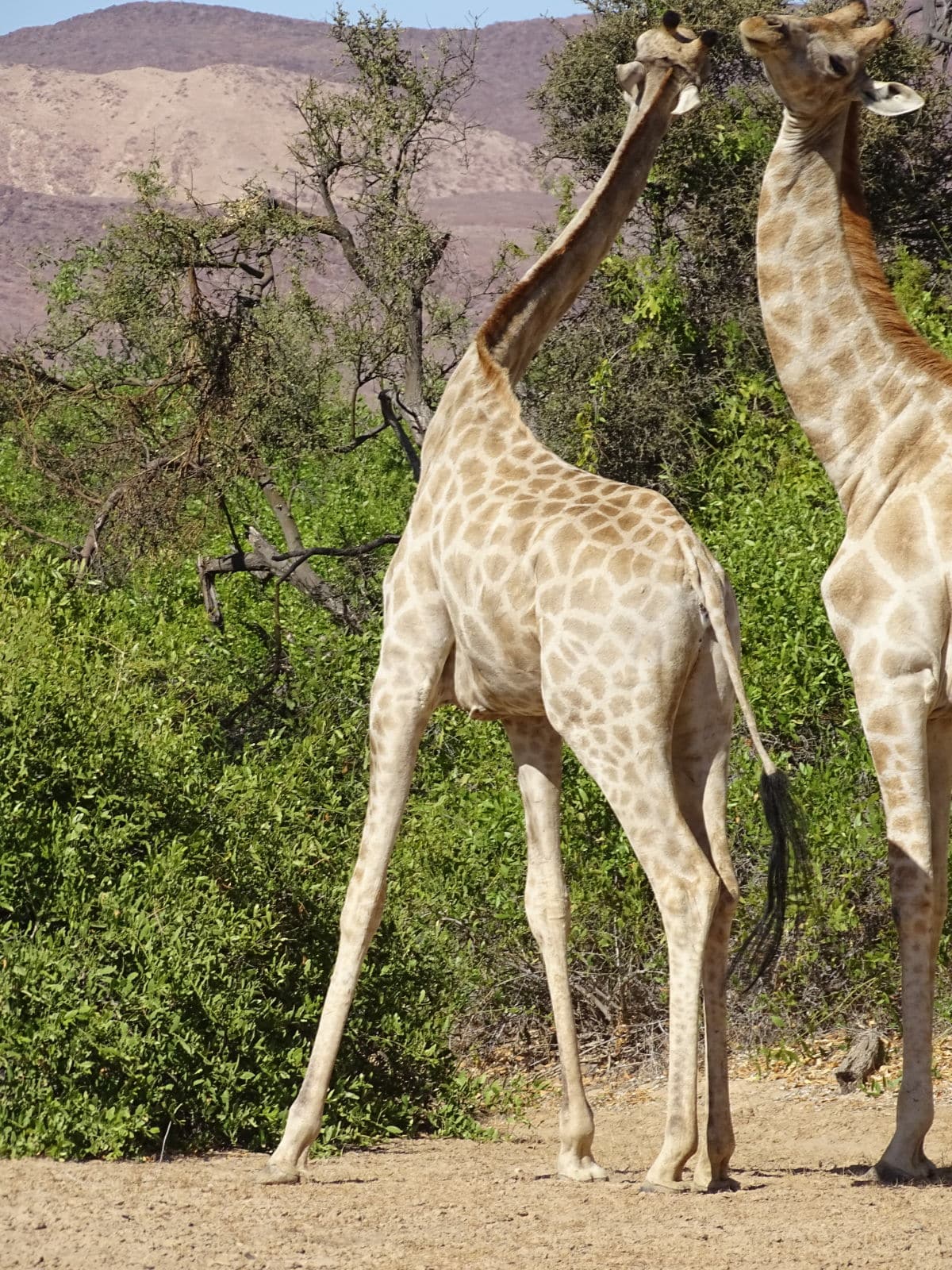
Monkey
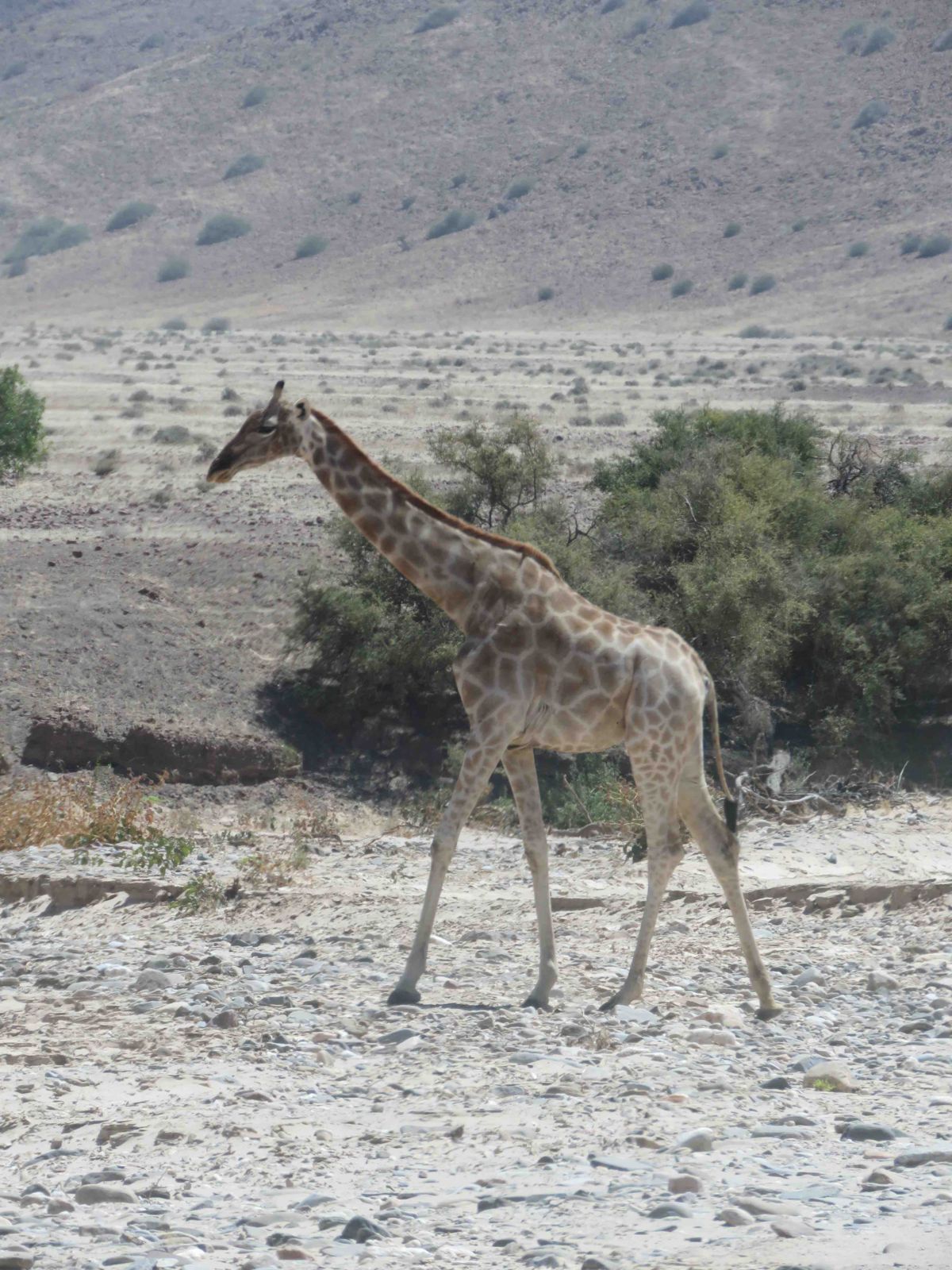
Monkey too has been up to her old tricks in the Hoarusib River. As you can see in her picture, the youthful chubby youngster of a year ago has morphed into a beautiful fully grown giraffe. While she still engages in cheeky antics around the riverbed, Monkey is also calming down and settling into the quiet gentle rhythms of giraffe life.
Unlike our other adopted giraffe, Dobby continues to evade us. While we are disappointed not to be able to bring you a photo of Dobby in this report, we are rather confident that he is doing just fine. He is probably following the footsteps of other bulls like Winky Wonk traversing the desert plains and mountains in search of females for mating and stocking up on fat reserves for the long dry season ahead.
